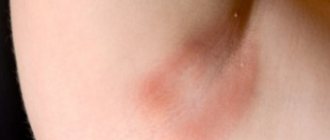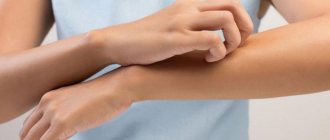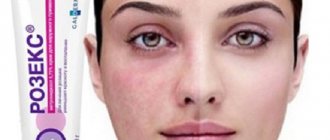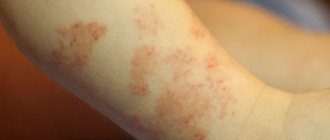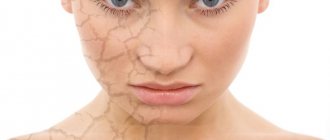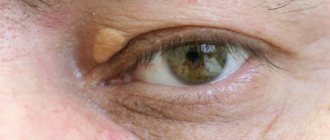An example of an armpit rash (in this case, a fungal infection called candidiasis) A skin rash affects the skin's appearance, color, or texture. The skin in the armpit area may become red, swollen, lumpy, cracked, flaky, scaly, blistered, patchy, or painful. In addition, rashes may come and go on their own or require specific treatment.
Adults (men and women) and children who are physically active, work in wet or hot conditions, or have sensitive skin types may be more likely to suffer from the rash.
Finally, it can appear in severe or mild form, in one armpit, in both armpits at the same time, or around them, affecting the upper chest or the area near the shoulder blades. Sometimes the rash can spread to other parts of the body.
Photos of rashes
To give you a visual idea of what an armpit rash may look like, here are a few images below. But it may look slightly different, depending on factors such as color, skin sensitivity, etc.
Shingles
Candidiasis – yeast fungal infection
Rash after exposure to poison ivy
Hidradenitis suppurativa – purulent inflammation in the sweat glands
Causes
Effective treatment of armpit rashes requires proper diagnosis. It may vary depending on the cause of the rash.
Shaving
Removing hair, especially with an old and dull razor, can leave irritation, damage to the skin, a burning sensation, red bumps, ingrown hairs, or even allow infection to spread, leading to a rash. Some people also get rashes after epilating or plucking their hair. To prevent this problem, you can try alternatives to shaving such as waxing, laser hair removal, or using good shaving creams or using slow, short strokes to minimize damage to the skin.
Heat and sweat
Heat rash
Another common cause of skin rashes is blocked sweat glands. “Symptoms range from superficial blisters to deep red bumps” [mayoclinic.org]. It often affects children, but can also affect adults (men and women).
Increased temperature, humidity and friction in the underarm area also lead to discomfort and rashes. “The rash appears as pimples or bumps” [skincare.lovetoknow.com] and occurs when temperatures are particularly high, such as in the summer.
Such rashes go away on their own. To reduce the impact of high temperatures, you should try to wear loose, lightweight clothing during hot seasons and use calamine lotion or hydrocortisone cream to soothe irritation.
Fungal infection or candidiasis
Candidiasis (yeast infection)
The presence of Candida yeast in the armpits can lead to a fungal rash. It typically affects “almost any area of the body, but is more common in areas where areas of the skin may touch or rub against each other, such as the armpits, groin, and between the fingers and toes” [Healthline.com].
Thrush thrives in sweaty, warm, and humid environments. Additionally, hot weather, poor hygiene, and tight or synthetic clothing allow it to multiply and spread.
People who are overweight, diabetic, on antibiotic therapy, have a weak immune system such as HIV or AIDS, work in wet conditions, have an inflammatory condition or are pregnant are at increased risk of candidiasis, including axillary fungal infections.
When the disease occurs, a rash is observed, which is accompanied by itching, red-violet spots, yellow or white substances on the affected area, peeling of the skin, soreness, redness, and purulent pimples. Treatment is with antifungal drugs such as ketoconazole, clotrimazole, amphotericin B, nystatin, or antifungal lotions, ointments, and creams.
Hidradenitis suppurativa
It refers to a "skin disorder that causes abscesses and scars" [webmd.com], often affecting the anus, buttocks, groin, breasts and armpits, but can spread to the neck, back, legs or face. The cause of this condition is not entirely clear, but it is thought to be inflammation of clogged hair follicles or apocrine sweat glands.
Treatment includes corticosteroids, retinoid (vitamin A) medications, adalimumab, infliximab, cyclosporine, and laser therapy or surgery.
HIV infection
HIV skin rash
At the initial stage, the HIV virus manifests itself in the form of rashes that can affect various parts of the body, including the armpits, chest, shoulders, etc. This usually occurs within two months of infection. There are "flat or subtle rashes with small reddish dots/spots (resembling eczema) in people with fair skin and dark purple/black in people with dark skin" [dred.com].
As a rule, such a rash does not itch and disappears within three weeks. However, for relief, you can try hydrocortisone cream or Benadryl to reduce itching, avoid hot showers or baths, and direct sunlight.
Deodorants and antiperspirants
Deodorant Rash
A rash can occur if you are allergic to some of the ingredients in your deodorant or antiperspirant. The skin is often “itchy, bumpy and red, and may peel, peel, or blister” [allergies.about.com].
To avoid this, you need to replace your deodorant or antiperspirant and use hypoallergenic brands for sensitive skin.
Contact dermatitis
Contact dermatitis under the arm
Allergic reactions to various chemicals such as soaps, shaving creams, body lotions, cosmetics, synthetic clothing materials, fragrances or detergents can cause rashes that are often red and itchy. They develop when the skin of the armpits comes into contact with allergens.
Lymphoma
Lymphoma can sometimes cause "an itchy rash... in the folds of the skin" [healthline.com], and the armpits are no exception. May be accompanied by lymphedema or inflammation of the lymph nodes.
Ringworm
Ringworm
Ringworm, or shingles, “causes scaly, crusty rashes that may appear as round, red spots on the skin” [medicinenet.com]. Hair loss, flaking, itching, blisters and other symptoms may also occur.
Staphylococcal infection
Staphylococcus is a bacterium resistant to methicillin and beta-lactam antibiotics. There are two types of methicillin-resistant Staphylococcus aureus: common (CS-MRSA) associated with poor hygiene, contact with contaminated items, and hospital-acquired (ha-MRSA) associated with surgical procedures, intravenous catheters, etc.
The first type often affects scratched, damaged or chafed areas of the skin, as well as areas with a lot of hair, such as the “buttocks, armpits, back of the head and chin” [healthline.com]. Infected areas become swollen, fluid-filled, red, and painful.
Treated with antibiotics and drainage. It is necessary to observe the rules of personal hygiene and avoid sharing personal items (towels, razors, sports equipment), take a shower after sporting events, disinfect linen, regularly wash your hands, etc.
Other reasons
In addition to the above, armpit rashes can be caused by several causes or factors, which include shingles, folliculitis, diabetes (makes people susceptible to fungal infection), pregnancy (most women are vulnerable to fungal infections during this period), granuloma annulare and poor personal hygiene.
There are also other possible causes of rashes such as excessive sweating, dermatitis, ichthyosis, bites, eczema, impetigo, Lyme disease, pityriasis rosea, Kawasaki disease, psoriasis, acne, cellulitis, urticaria and many others.
Symptoms and signs
Knowing what caused the irritation, it is easier to cure it. In some cases, the problem can be dealt with on your own, in others, medical attention is required.
Powdery plaque, a light red or pinkish rash and swelling, accompanied by an unpleasant odor of sweat, indicate the development of a fungus under the arm:
- small bubbles appear;
- the area of skin erosion is constantly increasing;
- Ordinary creams do not relieve itching and burning.
Mycosis must be treated under the supervision of a dermatologist..
Causes of excessive sweating in men, treatment methods
A staphylococcal infection that has entered the body receives an impetus for development against the background of fungal infections, viral diseases and dermatitis of any origin. Pustules appear, growing into large formations. Small watery blisters burst and form a crust, under which the infection continues to develop.
Synthetic clothing and prolonged use of unsuitable care products lead to the formation of diaper rash and irritation, which may cause symptoms:
- a grayish-yellowish coating, indicating the death of the upper layer of the epidermis;
- severe itching in the armpit;
- the skin peels off, forming a dry layer, and begins to peel off.
Irritation and redness caused by hyperhidrosis occurs most often in men, athletes and certain chronic diseases. Redness, itching and swelling, and a repulsive odor are typical.
You can see what the signs of hyperhidrosis look like in the photo below.
Rash with itching
Psoriasis is an overgrowth of “extra” skin cells that is accompanied by itching.
Itchy rashes can occur with ringworm, psoriasis, eczema, lymphoma (a type of cancer that affects the lymph nodes), contact dermatitis, deodorant allergies, HIV infection, fungal infections, folliculitis, and others.
To deal with this problem, it is necessary to treat the underlying cause. You can also try various tips and home remedies to help soothe the itching, including applying fruit paste, fresh basil leaves, or peppermint leaves. Apple cider vinegar, aloe vera, clay and oatmeal or flour may also help
Finally, you should avoid the temptation to scratch your armpits, even if there is a burning sensation, you can try cold compresses, cold baths, anti-inflammatory drugs, antihistamines, creams and ointments containing menthol, phenol, camphor, pramoxine, diphenhydramine, benzocaine, etc., and also hydrocortisone.
Treating armpit irritation at home
- When the cause of armpit irritation is increased sweating, a chamomile decoction will be an effective folk remedy. You need to fill it with boiling water, then wait about 20 minutes, and then pass through a strainer. You also need to add a couple of tablespoons of apple cider vinegar to the resulting broth. The prepared decoction should be wiped over the affected areas of the skin several times a day - 3-4 times.
- A decoction of St. John's wort will help cope with an allergic reaction to deodorant. The recipe for its preparation is quite simple. You need to pour boiling water over the St. John's wort and set it aside for a quarter of an hour. After the broth has infused, you can wipe problem areas of the skin with it 3 times a day.
- In the hot season, oak bark will be extremely useful, a decoction of which can normalize the functioning of the sweat glands and reduce their activity.
- The use of sea salt also has a positive effect. In order to prepare the solution, you will need 2 tablespoons of sea salt, diluted with 0.5 liters of water. Before using the solution, you need to pass it through a couple of layers of gauze.
Rash with redness
Disseminated granuloma annulare due to diabetes
In addition to itching, the rash may also be accompanied by redness (deep red to brownish red). A burning sensation, pain, lumpiness, and clear or yellow discharge may be present. These symptoms may spread to other parts of the body, such as the buttocks or groin.
Some of the most common causes include shaving, fungal infection, candidiasis, folliculitis, HIV, use of certain deodorants, contact dermatitis, disseminated granuloma annulare, lymphoma, cellulitis, lichen, eczema, urticaria and others.
Painful rashes
The pain can be dull, sharp or sharp, and the rash can be red, itchy, bumpy, etc. Hidradenitis suppurativa, staphylococcal infection, lichen, cellulitis, urticaria, eczema, folliculitis, some allergic reactions and other diseases can provoke pain rashes in the armpit area.
You can try various home remedies for relief. In addition, various creams or medications can help cope with painful sensations. You should consult your doctor for treatment recommendations.
Preventive and therapeutic measures for adults
Most of these diseases can be easily prevented by regular hygiene procedures and choosing appropriate sizes of clothing made from natural materials. If you have symptoms:
- It is not recommended to scratch itchy areas;
- to relieve disturbing sensations, use solutions of vinegar or lemon juice;
- You should temporarily avoid cosmetics and hair removal;
- it is necessary to replace clothes with looser, cotton ones.
With proper care of the armpit area, not every virus can cause serious trouble; the body will be protected from most infections. But if infection occurs, the services of a doctor are no less relevant than if a child is infected.
Treatment
Antiviral medications are used to treat underarm rashes caused by viruses; bacterial infections will require antibiotics, while rashes caused by fungi require antifungal medications. To help relieve some of the symptoms, you can try home remedies, anti-inflammatory medications, antihistamines (if allergy-related), and other medications.
Home Remedies
- Ice – applied in the form of ice packs (or ice cubes wrapped in a clean cloth) to relieve itching
- Vitamin E, aloe vera and tea tree oil. Apply vitamin E, tea tree and aloe vera oil to soothe and reduce inflammation.
- Vitamin C – increase intake to reduce skin infections
- Lemon – Rub over the underarm area to help kill bacteria. Also acts as a natural deodorant. Do not use immediately after shaving.
- Diluted tea tree oil - used to kill fungus and relieve itching
- Baking soda – Add about half a teaspoon to bathing water or underarms to help dry out skin.
Other helpful remedies include a mixture of lavender and coconut oil (helps with irritation and breakouts), crushed fresh strawberries and cream (soothes irritation), and neem leaf paste (has antiseptic and antibacterial properties).
Cream
Antifungal creams should be used whenever the cause of the rash is a fungal infection and antibiotic ointments when the cause is a bacterial infection.
Some of the creams, such as hydrocortisone, Benadryl, Calamine lotion, are good for soothing the skin after mild irritation (itching, discomfort or pain).
Lightening the armpit area
How to get rid of brown spots on the skin
There are different ways to get rid of unpleasant dark spots in the delicate area. If a cosmetic defect is based on a disease, then first of all it needs to be treated, and only in combination with proper therapy will local methods be effective . In non-pathological conditions, the effect is only on the changed integument itself.
Cosmetical tools
The armpit area is delicate, so you should not use all products with a claimed whitening effect, as some of them contain too aggressive components.
The following cosmetic products have the best reviews:
- Elure line with natural enzyme melanozyme, which lightens pigmentation.
- Zinc ointment based on zinc oxide.
- Whitening line from Danne with citric, glycolic, tartaric, lactic and salicylic acid.
- “White Flax” series from “Floresan” with ascorbic and fruit acids, cucumber and bearberry extract.
General Tips
- Maintain good personal hygiene and thoroughly clean the affected areas (use mild soap at least twice a day).
- Wear clothes made from natural fibers.
- Cornstarch may help dry out rashes
- Place a soft piece of tissue under the armpit to reduce friction.
- For a quick recovery, stop using deodorants, antiperspirants, perfumes, body creams or lotions.
- It is good to ventilate the room, especially if the rash occurs during warm periods of time.
- Use special anti-friction powders.
Spots on the skin under the armpits: photos, causes of formation, how to get rid of them
Skin pigmentation in the armpit area is a fairly common phenomenon.
The appearance of brown spots under the armpits in men, as well as in women - what is it?
Dark spots under the arms are not only an aesthetic nuisance, but also a “signal” that certain physiological disorders are occurring in the body.
Let's determine why cinnamon spots appear under the arms, what is the reason for this, and whether it is possible to remove them yourself.
Why do they appear?
There are several reasons why dark spots may appear under the arms. It should be noted that in most cases, skin pigmentation in the axillary area does not pose a threat to human health.
If the spots begin to gradually “grow,” darken, peel, and also spread to other parts of the body, then this is a reason for an emergency visit to a dermatologist.
What reasons can provoke the appearance of darkening.
Frequent shaving of the armpits
The most popular method of getting rid of armpit hair is shaving. Frequent shaving of hairs leads to the fact that the skin in the corresponding area becomes sensitive.
This leads to the appearance of ingrown hairs, which create the appearance of darkening of the skin.
Dead cells
- The area in the armpits, as a rule, is very rarely cleaned with scrubs.
- As a result, a significant number of keratinized skin cells accumulate on the skin.
- Getting into microcracks in the epidermis, dead cells are rubbed out and turn yellow, which is what causes dark spots to appear.
Frequent use of deodorants (antiperspirants)
Some ingredients in deodorants may react with human skin. The result of this process is yellowing or darkening of the skin under the arms.
Failure to observe basic personal hygiene
Darkening of the skin under the arms is often the cause of skin contamination. Dirt accumulated in the armpit causes dark spots to appear.
Age-related changes
People (more often women) after 40 years of age may experience age-related skin pigmentation, one of the main reasons for which is hormonal imbalance during menopause.
Endocrine system diseases
Often, a spot in the armpit can be caused by the development of an endocrine pathology. Such skin pigmentation can be a sign of diseases such as acanthosis nigricans or bronze Addison's disease.
Fungal skin diseases
Brown spots from sweat may appear on the body as a result of the activity of a fungal infection. For pathogenic fungi, sweat is a favorable environment for active life. Among the fungal diseases that provoke darkening of the armpits are rubromycosis of skin folds, candidiasis, and erythrasma.
Liver diseases
The condition of the body can always be judged by the external condition of the skin. If dark spots begin to appear in the axillary area, then this skin condition often indicates the development of pathogenic processes in the liver. The main reason for pigmentation is the inability of the internal organ to fully cope with its natural functions.
How to remove and cure
You can use any means to eliminate dark spots under the arms only after determining the cause of their appearance.
If skin pigmentation is caused by a pathological condition of the body, then adequate therapy is prescribed by the doctor after examining the patient’s body, as well as after confirming a preliminary diagnosis.
At the doctor's
Depending on the active cause that caused the appearance of dark spots under the arms, the patient is prescribed appropriate therapy. Often, after the underlying disease is cured, the problem of skin pigmentation disappears on its own.
At home
If the darkening of the armpits is not caused by a pathological condition of the body, then the following methods will help to effectively cope with the aesthetic problem:
- Lemon juice. Lemon juice is known to have excellent whitening effects. To get rid of dark spots in the armpit area, just wipe the problem area of skin with a slice of lemon. Leave the juice on the skin for 20 minutes, then rinse gently with cool water. Similarly, you can use a slice of fresh cucumber, which, like lemon, has a strong whitening effect.
- Soda scrub. Prepare a scrub from 2 tsp. baking soda powder and a small amount of water. The result should be a creamy mass that needs to be applied to the armpit area. Massage the problem area for 2 minutes, then rinse off the soda scrub with cool water.
- Potato mass. Grate the raw potatoes on a fine grater and squeeze the juice out of the mixture. Soak a soft cloth in the prepared potato liquid and thoroughly treat the armpit area. Let the product sit for half an hour, then rinse with a stream of moderately warm water.
To get the desired result, the above methods of folk treatment for dark spots under the arms must be used regularly. The problem area is treated twice a day. The course of therapy is 2 weeks.
Tips and tricks
To eliminate skin pigmentation in the armpit area, you can use appropriate cosmetics. It is important to remember that the skin in this area is very delicate; you should not overuse whitening cosmetics.
To combat dark spots, it is recommended to choose gentle products, namely:
- zinc ointment;
- cream "Achromin";
- Vitex cream;
- whitening cosmetics from Elure, which contains the enzyme melanozyme, which has the effect of lightening pigmentation;
- whitening cosmetics from Danne (active ingredients - salicylic, lactic, citric, glycolic acids);
- series “White Flax” from - whitening of dark spots occurs due to the action of the active composition (fruit acids, ascorbic acid, cucumber extract, bearberry extract).
Source:
Spots under the arms photo, what is it
Most cases of brownish or reddish spots do not pose a threat to human health or life. Only if they increase in size, move to other parts of the body, flake, itch, or become covered with plaque, it is necessary to conduct a diagnosis with a dermatologist in order to select the correct treatment.
This skin disease belongs to the group of pseudomycoses and is caused by one of the types of corynebacteria. Specific spots with erythrasma affect the upper layers of the skin, they have clear boundaries and can be of different shades: from pink to gray-brown and bright burgundy. Sometimes the lesion is covered with light scales with fine peeling, the skin is dry and may crack.
In addition to the armpits, erythrasma can spread:
- on the groin, thighs, abdomen;
- in women under the breasts;
- in men near the scrotum and anus.
In the initial stage of the disease, no sensations arise, the formations are painless and do not cause discomfort.
Rubrophytia
Rubromycosis of large skin folds is a fungal infection of the axillary and groin areas, in which round pink spots appear with peeling and dry skin furrows, with small scales.
Dark spots under the arms can extend well beyond these areas:
- affect the thighs, legs, chest;
- grab feet, hands;
- change the structure of the nail plates;
- hair follicles.
Fungus on the skin can be passive for a long time.
Under favorable factors (decreased immune strength, endocrine diseases, poor hygiene), the fungus is activated. The spread of rubromycosis is facilitated by the person himself; when scratching or washing the body, the fungus can be transmitted to healthy areas of the skin.
Athlete's inguinal
The fungus most often affects the stronger sex. Dark spots under the armpits and in the groin in men can involve the scrotum, the fold between the buttocks, and the anus. In women, the lesion, in addition to the armpits, is located under the breasts, on the pubis, and buttocks.
Characteristic symptoms of athlete's foot:
- severe itching, burning;
- discomfort when walking;
- discomfort with any movement;
- pain with simple touch;
- rubbing with clothes.
Skin candidiasis
Skin fungus of the genus Candida most often affects moist areas of the body. Infection can result from contact with a sick person or through objects he has touched.
Dark spots under the arms and in other large folds of the body are usually red in color with a white coating on the surface.
Symptoms of skin fungal inflammation:
- small blisters, papules;
- they burst;
- grow together into one wet spot;
- pain appears;
- burning, severe itching;
- purulent plaque when the process is running.
Less commonly, the appearance of dark spots in the armpits can be caused by pityriasis versicolor and pityriasis versicolor. In the first case, the lesions are usually located on the abdomen, back, arms and legs.
Pityriasis versicolor is characterized by the appearance of dark brown spots measuring 1-5 cm.
In women, the rash is usually localized in the chest, groin and armpits, in men on the back and inner thighs.
Diagnosis and treatment
- Clotrimazole (ointment, cream) is a universal remedy used for erythrasma, candidomycosis, athlete's foot and lichen versicolor;
- Pimafukort (ointment) – has anti-inflammatory, antibacterial and antifungal effects.
Considered a broad-spectrum antibiotic; - Lamisil (ointment) - very often prescribed for tinea versicolor and lesions caused by yeast-like fungi;
- Exoderil is effective for epidermophytosis, pityriasis versicolor and candidomycosis.
A combination of the listed drugs is allowed, but on the condition that the treatment regimen is drawn up by the attending physician, who, depending on the pathogen, determines the dosage and duration of taking the prescribed drugs.
And a little about secrets
Have you ever had problems with Itching and irritation ? Judging by the fact that you are reading this article, you have a lot of experience. And of course you know firsthand what it is:
- scratch irritation
- wake up in the morning with another itchy plaque in a new place
- constant unbearable itching
- severe dietary restrictions, diets
- inflamed, bumpy skin, spots.

